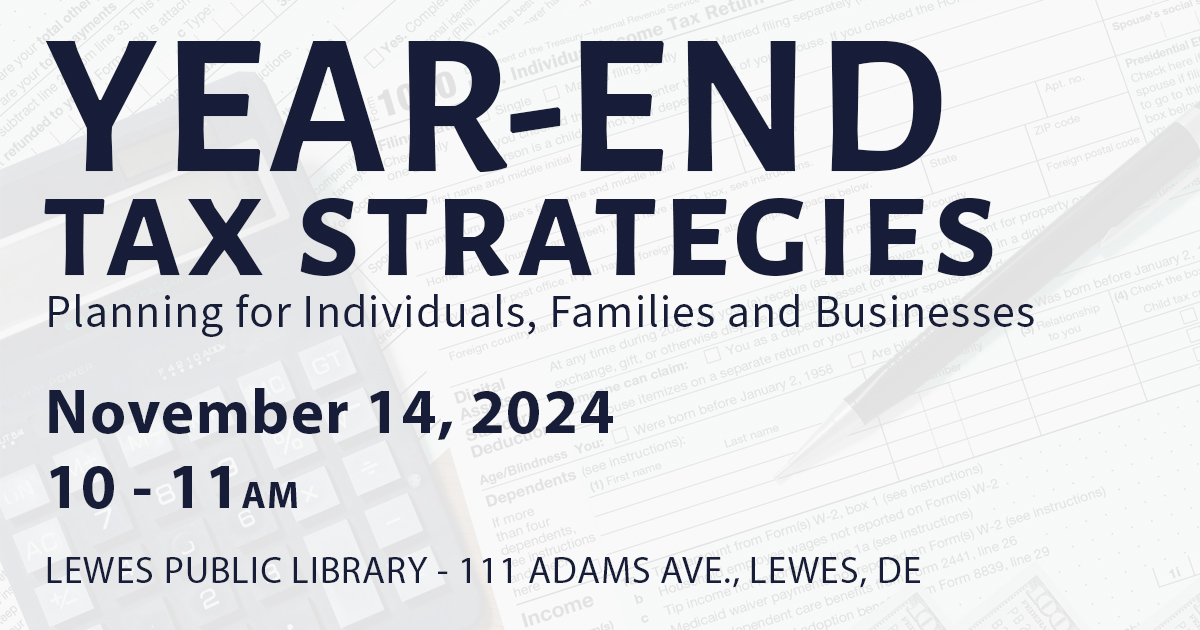Tax season has started. Your tax professional is ready to prepare your 2020 federal and state returns — but are you ready? The pandemic has led to several changes to the tax rules for last year. Here’s a summary of four taxpayer friendly changes that may affect your 2020 federal income tax return.
1. Limited Charitable Deduction Can Be Claimed If You Don’t Itemize
“Above-the-line” means you can take the write-off whether you itemize deductions or not. That helps the estimated 87% of filers who the IRS says claim the standard deduction instead of itemizing. The $300 deduction limit applies equally to unmarried individuals and married couples who file joint tax returns for 2020. (However, if you use married-filing-separate status, the limit is $150 for 2020.)
Important: The recent Consolidated Appropriations Act extends the $300 write-off for charitable contributions in 2021 and doubles the deduction limit for 2021 to $600 for married couples who file joint returns.
2. Recovery Rebate Credit Can Be Claimed to Collect Full Stimulus Payments
Many taxpayers are eligible for first- and second-round “Economic Impact Payments” (EIPs) from the federal government. These COVID-19 relief payouts are sometimes called stimulus payments. Your 2020 Form 1040 can come into play in determining how much you are entitled to collect.
First-round payments. Congress approved the first round of EIPs in March 2020. If you were eligible, you could have received up to $1,200 for an unmarried adult ($2,400 for a married couple). Plus, you may have received up to $500 for each qualifying child.
Eligibility depends on your adjusted gross income (AGI) and filing status. People under the following AGI thresholds are eligible to receive the maximum first-round EIPs:
- $75,000 for single people and married people who file separate returns,
- $150,000 for married people who file joint returns, and
- $112,500 for people who use head-of-household filing status.
Once your AGI reaches the following thresholds, you’re ineligible for first-round payments:
- $99,000 for single people and married people who file separate returns,
- $198,000 for married people who file joint returns, and
- $136,500 for people who use head-of-household filing status.
Second-round payments. Congress approved a second round of EIPs in December 2020. If you were eligible, you could potentially have received up to $600 for an unmarried adult ($1,200 for a married couple). Plus, you could have received up to $600 for each qualifying child.
Again, eligibility depends on your AGI and filing status. People under the following AGI thresholds may have received the maximum second-round amounts:
- $75,000 for single people and married people who file separate returns,
- $150,000 for married people who file joint returns, and
- $112,500 for people who use head-of-household filing status.
Once your AGI reaches the following thresholds, you’re ineligible for second-round payments:
- $87,000 for single people and married people who file separate returns,
- $174,000 for married people who file joint returns, and
- $124,500 for people who use head-of-household filing status.
Important: Most people have already received their first and second round EIPs based in information shown on their 2018 or 2019 federal income tax returns or information provided to the IRS. If you’ve already received payments based on your 2018 or 2019 AGI, you can keep those amounts even if you wouldn’t be entitled to that much based on your 2020 AGI.
However, some taxpayers may be entitled to more EIP money. That’s because the maximum payments that you’re entitled to are based on your 2020 income, which will be reported on your 2020 Form 1040.
If your 2020 AGI entitles you to bigger EIPs than what you’ve already collected, you can claim a so-called “recovery rebate credit” for the difference on your 2020 Form 1040. In effect, you’re allowed to true up your allowable EIPs based on your 2020 income now that it’s finally known.
3. CTC and EITC Credits Can Be Calculated Using 2019 or 2020 Earned Income
So-called “refundable” tax credits can be collected even if you have no federal income tax liability. For 2020, eligible taxpayers can claim a refundable child tax credit (CTC) equal to 15% of earned income in excess of $2,500, subject to a maximum refundable amount of $1,400. While the CTC can be up to $2,000, only up to $1,400 can be refundable. The refundable amount is called the additional child tax credit.
The earned income tax credit (EITC) is fully refundable. It equals the applicable percentage of an eligible taxpayer’s earned income.
Earned income for purposes of these two credits means wages, salaries, tips, other taxable employee compensation and self-employment income. Many people had lower earned income in 2020 than in 2019 due to COVID-19 economic fallout, which could result in lower refundable credits.
For purposes of calculating the refundable CTC and the EITC for the 2020 tax year, you can use either your 2019 or 2020 earned income. This provision could result in bigger credits if your 2019 earned income was greater than the 2020 figure.
4. People Who Took CVDs Have Two Recontribution Options
Under the CARES Act, IRA owners who were adversely affected by the COVID-19 pandemic could take tax-favored coronavirus related distributions (CVDs) from their IRAs in 2020. If you took advantage of this privilege, you can recontribute all or part of the CVD amount(s) back into one or more IRAs within three years of the distribution date(s). You can treat each distribution and later recontribution as a federal-income-tax-free IRA rollover transaction.
CVDs could be a useful cash-management tool for those experiencing a cash crunch in the COVID-19 era. There are no restrictions on the use of CVD funds.
For example, you could have used the money to pay bills and recontribute later (within the three-year window) when your financial situation improves. Or you can help your adult kids now and recontribute later. Or you can keep the CVD money and pay the resulting tax hit, which may be modest depending on your tax circumstances for last year.
If you took a CVD, you’ll receive a Form 1099-R for 2020 that reports the distribution. Now you must decide what to do. You have two options:
- Recontribute all or part of the CVD amount by the due date of your 2020 Form 1040 (including any extension). Here, the recontributed amount is effectively treated as a federal-income-tax-free rollover. So, if you extend your 2020 return to October 15, 2021, you have until that date to recontribute and get the desired tax-free treatment, or
- Recontribute nothing by the due date of your 2020 Form 1040 (including any extension). Here, taxable income is triggered, but you won’t owe the 10% penalty that usually applies to taxable IRA distributions taken before age 59½. Now, you must decide to either: 1) report the entire amount on your 2020 return, or 2) spread the reported income evenly over 2020, 2021 and 2022.
If you opt for the latter and then recontribute any part of a CVD within the three-year window, you can recover the federal income tax hit(s) by filing an amended return to report the recontribution. When all is said and done, you’ll have achieved federal-tax-free treatment for the recontributed amount. You must treat all CVDs received in 2020 the same way.
Important: This tax-favored treatment applies equally to CVDs taken from traditional IRAs, SEP-IRAs and SIMPLE-IRAs. Similar rules apply if you took a CVD from a company retirement plan last year.
We Can Help You Navigate the Rules
Multiple rounds of COVID-19-related relief legislation were enacted in 2020. These laws contain provisions that could affect your 2020 federal income tax return. Consult with your tax advisor to determine whether you’re eligible for these and other tax-favored relief measures. There are no one-size-fits-all strategies. What’s right depends on your personal situation.
PKS & Company, P. A. is a full service accounting firm with offices in Salisbury, Ocean City and Lewes that provides traditional accounting services as well as specialized services in the areas of retirement plan audits and administration, medical practice consulting, estate and trust services, fraud and forensic services and payroll services and offers financial planning and investments through PKS Investment Advisors, LLC.
© Copyright 2021. All rights reserved.
Brought to you by: PKS & Company, P.A.




